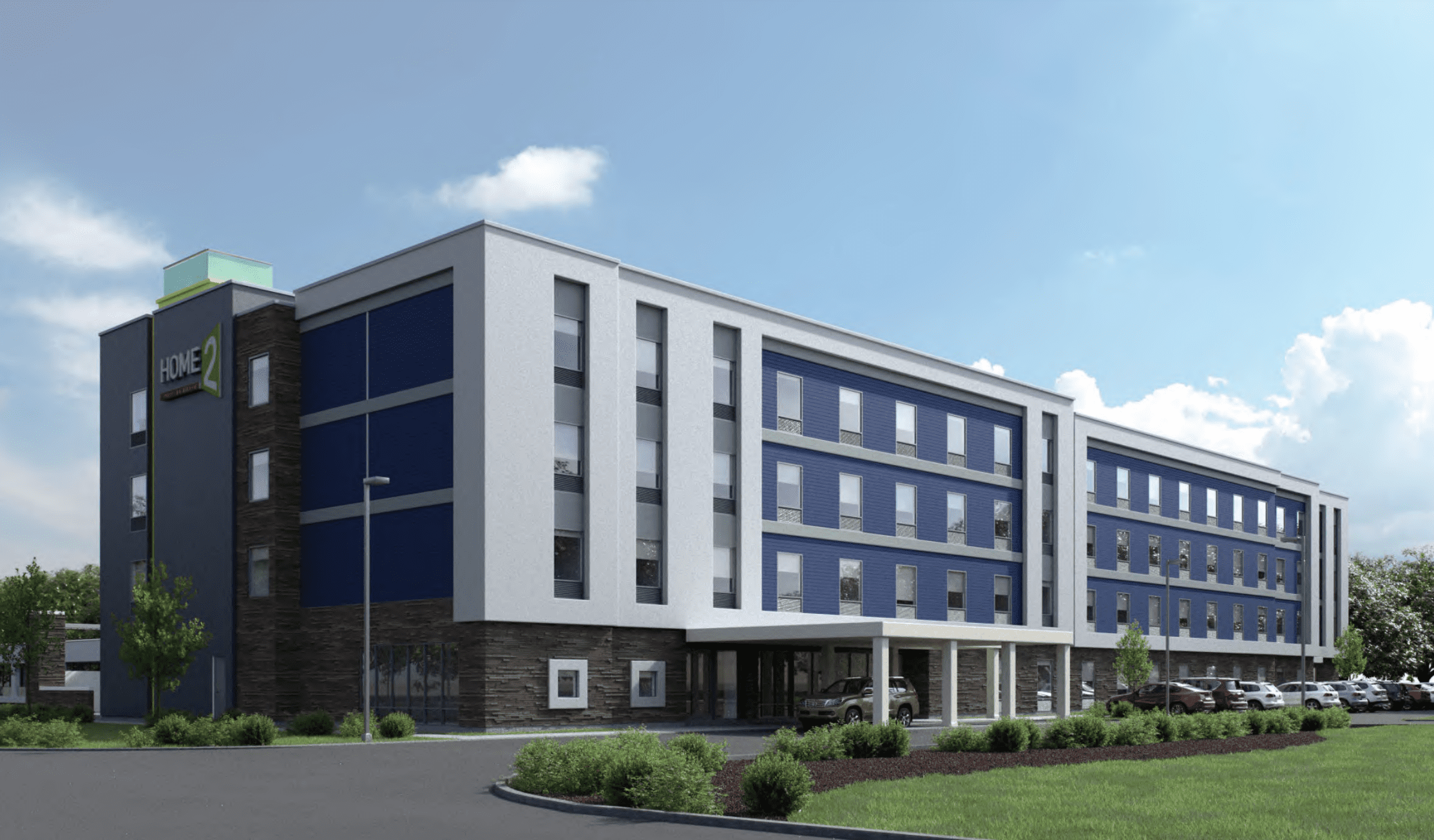State College Borough Council on Monday night voted to close a loophole in the inclusionary housing ordinance that a hotel developer used to gain an extra floor on a new building planned for South Atherton Street.
The change limits to 30% the amount of commercial space in mixed-use buildings that can qualify for incentives by having inclusionary (or affordable) housing on-site, but cannot be retroactively applied to the project that some residents and borough staff said abused the ordinance’s intent.
South Atherton Real Estate 1 LP submitted plans in 2020 for an 80,000-square foot, four-story building on the west side of the former Autoport property at 1401 S. Atherton St. It will have a 122-room Home2 Suites by Hilton and eight apartment units, including one inclusionary housing unit, at the back of the building.
The proposed hotel would be located in the CP2 planned commercial zoning district, which allows for buildings up to three stories. But an incentive included in the zoning ordinance designed to expand the supply of affordable housing in the borough allows an additional story if inclusionary housing is incorporated into residential units.
Ten percent of the units must be designated as inclusionary to qualify for the incentive, so just one inclusionary unit was enough to satisfy the requirement under the original ordinance. About 90% of the proposed building is commercial.
“Staff have received many complaints from the State College South Neighborhood Association and the Coalition of State College Neighborhood Associations, and this has been frequently called an abuse of the ordinance,” Borough Manager Tom Fountaine said.
At a planning commission meeting in January and in correspondence to the borough, numerous residents said the developer was manipulating the ordinance to do the bare minimum at a time when State College is in need of affordable housing. Some also said the four-story building will tower over neighboring Bradley Avenue residences and by allowing for additional hotel guests may create more traffic issues.
“State College needs more inclusionary housing, not a developer doing the bare minimum to get what he wants without really helping the community he’s going to profit from,” neighboring resident Michael Cross said at the time.
The sole member of the general partner that oversees South Atherton Real Estate LP is Gregory Welteroth, whose Welteroth Property Group is based in Mountoursville. He is building the hotel in partnership with Concord Hospitality, which develops and manages hotels around the country.
Home2 Suites are Hilton brand extended-stay hotels, but the new hotel would be independently owned.
The incentive has been used to add floors to multiple newer buildings in State College, but those have been primarily multi-family residential buildings. This is the first time a developer has argued for its use in a primarily commercial use building, Planning Director Ed LeClear said.
“This was not an intended result of the ordinance,” LeClear said on Monday. “As such, staff worked with the planning commission to develop a way to remedy this so that it is very precise, specifically looking at a way to ensure that a developer who is essentially building a commercial building who adds a few residential units doesn’t trigger the incentives to gain an additional floor of height.”
Under the revised ordinance, at least 70% of a building’s gross floor area must be for residential purposes. LeClear cited as an example Atherton Place at 1311 S. Atherton St., which has a Dunkin’ Donuts on the ground floor and 12 residential units. The building is 74% residential and 26% commercial.
“The goal for the ordinance is to still allow for mixed-use buildings,” LeClear said. “This has been a priority of council for decades now to ensure at least first-floor commercial space and residential above it. We think this percentage will still allow for that mixed use but prevent against the kind of abuse the current development is exploiting.”
Council voted unanimously to amend the ordinance.
Borough staff and solicitor Terry Williams reviewed the hotel plans multiple times but determined that because they met the letter, if not the spirit, of the ordinance at the the time they were submitted, they could not be denied.
Before construction can begin on the hotel, the developer still needs to submit for approval a revised final land development plan addressing previously identified traffic flow issues.



